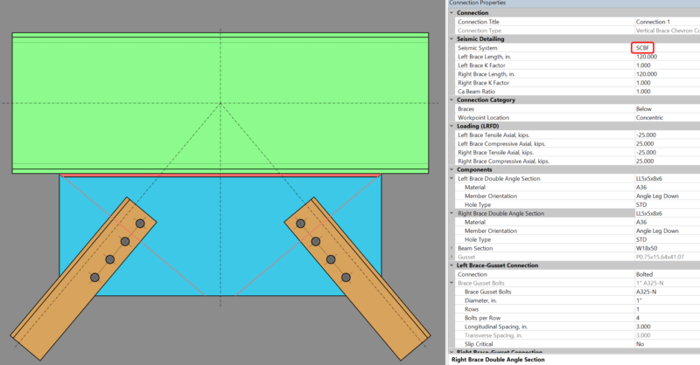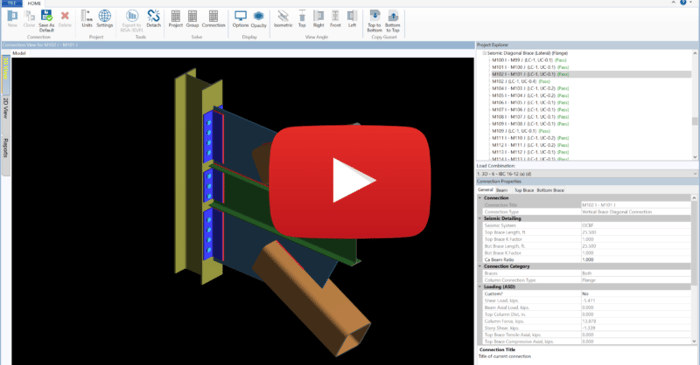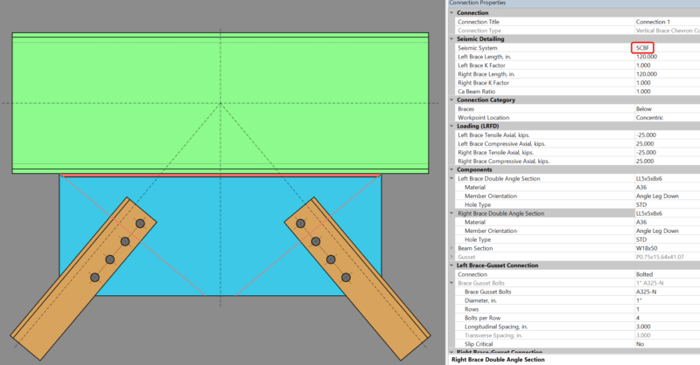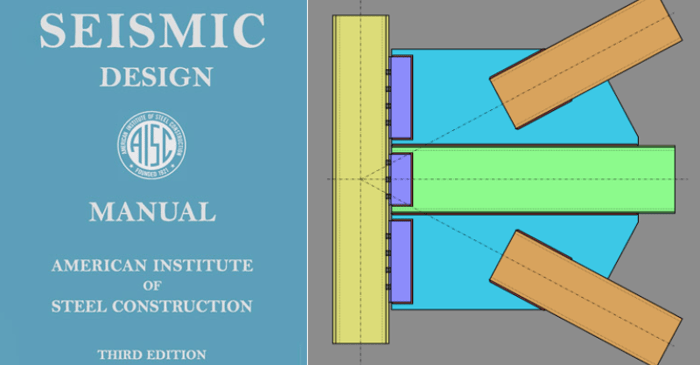
May 25, 2016
SCBF Seismic Brace Connections
Vertical Diagonal Brace connections and Vertical Chevron Brace connections may be designed as Special Concentric Braced Frame (SCBF) connections in RISAConnection v6.
With RISA’s latest release of RISA-3D v23.0.1, we’re continuing to expand support for IBC 2024, helping engineers stay aligned with the latest building code requirements as adoption accelerates across the U.S.—including federally funded projects. This release builds on v23.0.0 ASCE 7-22 enhancements and adds key material design updates that move RISA further into full IBC 2024 compliance. New Material Design Updates Supporting IBC 2024 The upcoming release introduces several important design code updates referenced by IBC 2024, including: Steel Seismic design per AISC 341-22 Prequalified connections per AISC 358-22 Continued support for AISC 360-22 (16th Edition) steel design Ongoing updates to the hot-rolled shape database, including compatibility with both 15th and 16th Edition steel manuals These updates support modern seismic detailing requirements and ensure consistency with current steel industry standards. Masonry Masonry design per TMS 402-22, aligning with the latest strength and serviceability provisions adopted by IBC 2024. Key updates include: Revisions to shear design equations, including clarified definitions of shear area as outlined in Table 4.4.5, improving consistency and transparency in shear capacity calculations. Updated strength reduction factors for flexure and combined flexure + axial. Unlike previous editions that used a fixed ϕ-factor of 0.9, TMS 402-22 introduces tension-controlled,…
Read More

Vertical Diagonal Brace connections and Vertical Chevron Brace connections may be designed as Special Concentric Braced Frame (SCBF) connections in RISAConnection v6.

This webinar shows users how to design and detail brace connections including gussets to meet the AISC 341/358 Seismic Provisions.

Vertical Diagonal Brace connections and Vertical Chevron Brace connections may be designed as Ordinary Concentric Braced Frame (OCBF) connections in RISAConnection v6.

RISAConnection v6 has introduced the ability to design vertical brace connections per the seismic design provisions of the AISC 341-10 Seismic Design Manual.
Our monthly "Structural Moment" newsletter is the best way to keep up with RISA’s product updates, new releases, new features, training events, webinars and more...